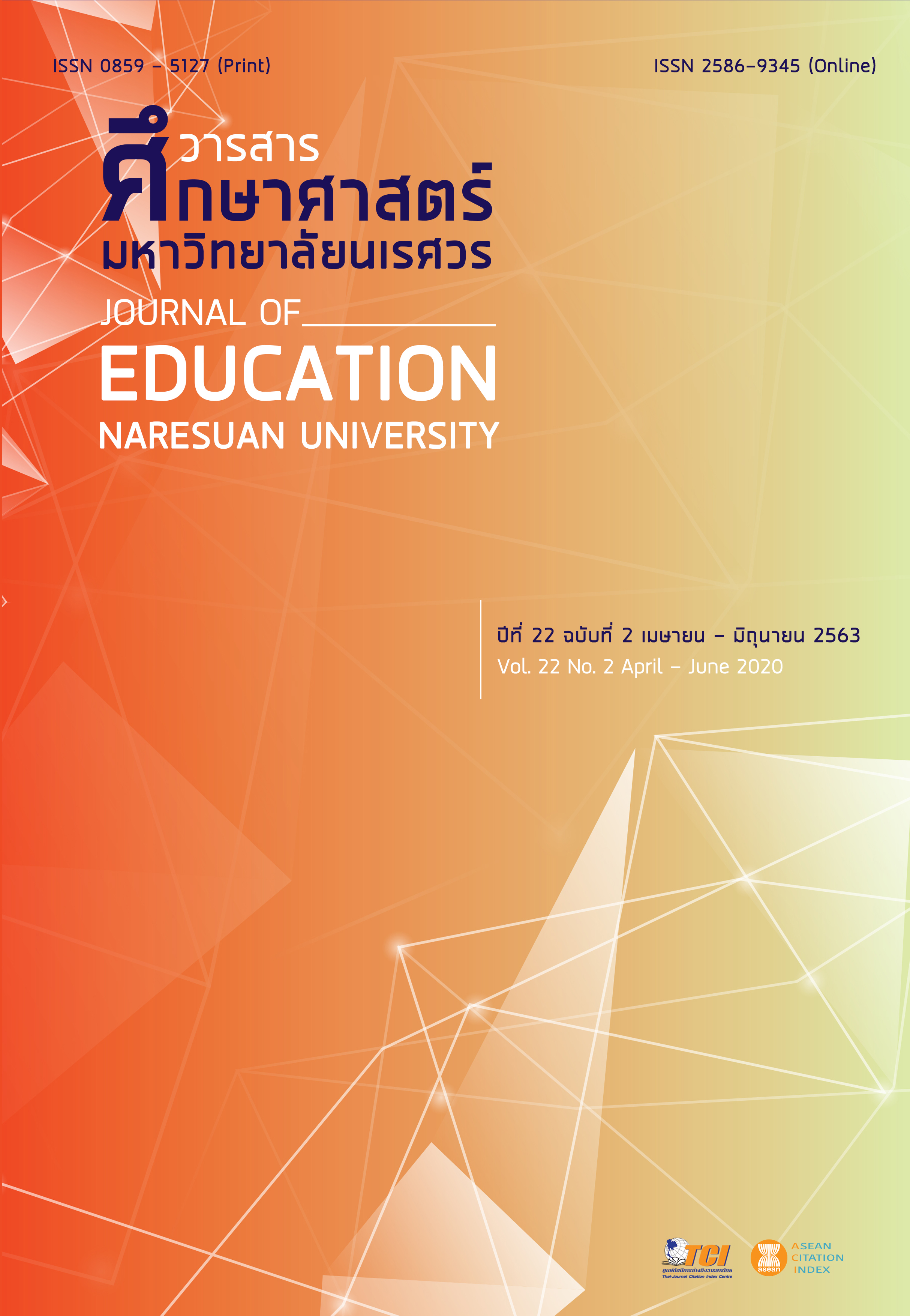DEVELOPMENT OF ARGUMENT-DRIVEN INQUIRY MODEL TO ENHANCING GRADE 10 STUDENT’S CREATIVE THINKING SKILLS
Main Article Content
Abstract
The purpose of this action research was how to teach with using argument-driven inquiry (ADI) model for promoting student’s Creative Thinking Skills. The participants were 31 science students in 1 classroom. The research instruments included a set of lesson plan, semi-structured learning observation, student’s learning journals and artifacts. The results showed that ADI model consisted 7 steps: Identification of the task and the guiding question, designing a method and collecting data, analyzing data and developing a tentative argument, argumentation section, explicit and reflective discussion, writing an investigation report or creating product of group, revising and submitting the report, respectively. Moreover, the core of the teaching approach was to encourage students to become curiosity persons by using problematic issues in everyday life that can enhance student’s Creative Thinking Skills. In addition, the study found that students can develop all Creative Thinking Skills. The most development of those were curiosity, originality, imagination, fluency, elaboration, and flexibility, respectively.
Article Details
The owner of the article does not copy or violate any of its copyright. If any copyright infringement occurs or prosecution, in any case, the Editorial Board is not involved in all the rights to the owner of the article to be performed.
References
Berland, L. K., & Reiser, B. J. (2011). Classroom communities’ adaptations of the practice of scientific argumentation. Science Education, 95(2), 191-216.
Centre for Educational Research and Innovation. (2017). Teaching, assessing and learning creative and critical thinking skills in education. Retrieved October 13, 2017, from http://www.oecd.org/edu/
ceri/assessingprogressionincreativeandcriticalthinkingskillsineducation.htm
Greenstein, L. (2012). Assessing 21st century skills : A guide to evaluating mastery and authentic learning. United States: Corwin Press.
Guilford, J. P. (1956). The structure of intellect. Psychological Bulletin, 53(4), 267-293.
Kemmis, S., McTaggart, R., & Nixon, R. (2014). The action research planner : doing critical participatory action research. Singapore: Springer.
Norris, S., Philips, L., & Osborne, J. (2007). Scientific inquiry: The place of interpretation and argumentation. Science as Inquiry in the Secondary Setting. Retrieved October 4, 2017, from http://www.nsta.org/store/download.aspx?l=8JgS7/JBvFIPibfC0TL4iw==
Office of the National Economic and Social Development Board. (2017). The twelfth national economic and social development plan (2017-2021). Bangkok: Office of the National Economic and Social Development Board. [in Thai]
Partnership for 21st Century Learning. (2007). Framework for 21st century learning. Retrieved October 4, 2017, from http://www.p21.org/our-work/p21-framework
Runco, M. A. (2014). Creativity : Theories and themes: Research, evelopment, and practice. United States: Academic Press.
Sampson, V., Grooms, J., & Walker, J. P. (2011). Argument-driven Inquiry as a way to help students learn how to participate in scientific argumentation and craft written arguments: An exploratory study. Science Education, 95(2), 217–257.
Suttipon, R. (2017). A new paradigm in education and development of thailand teachers in the digital age. Journal of Education Naresuan University, 19(2), 344–355. [in Thai]


